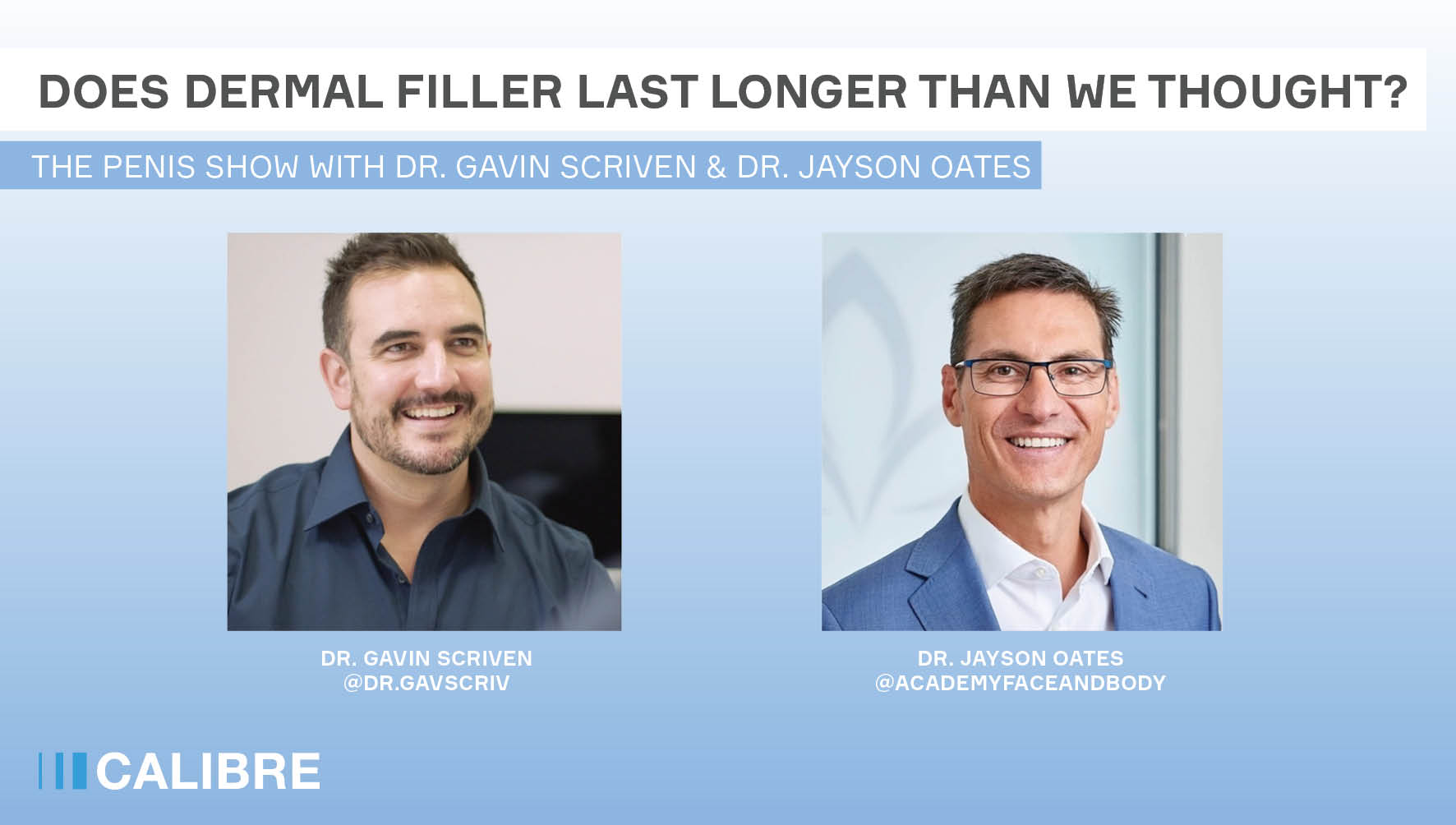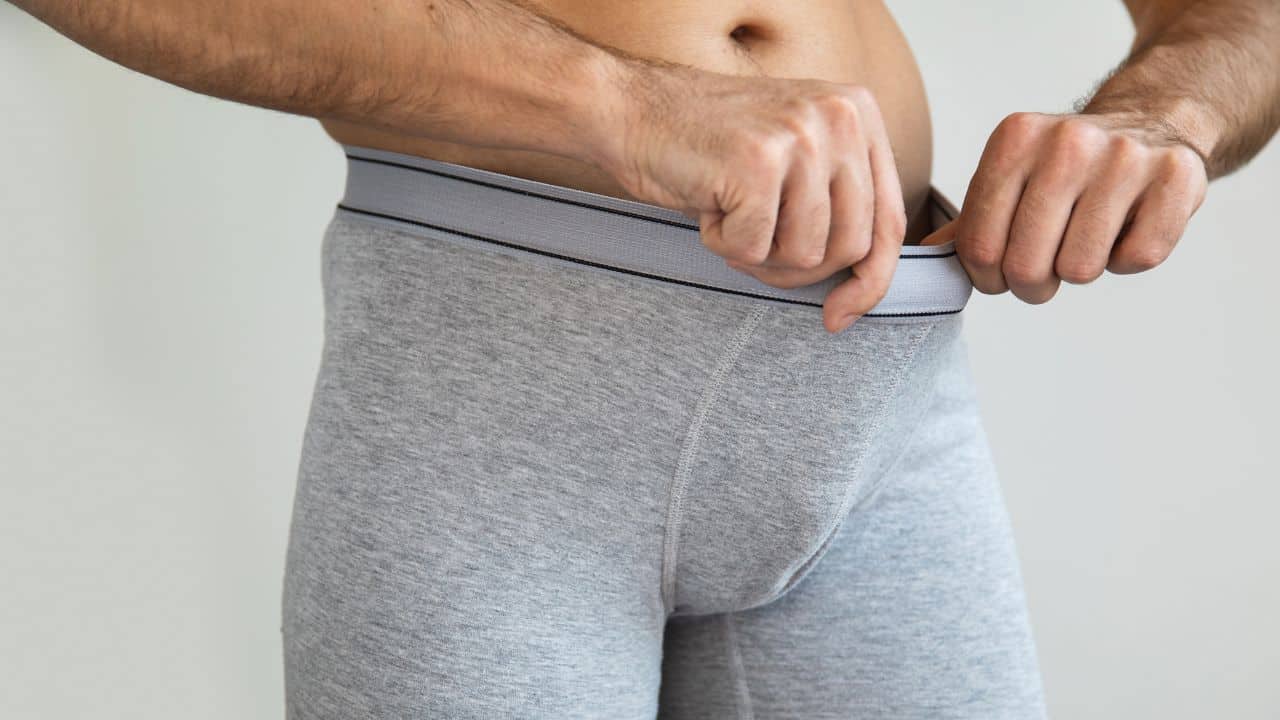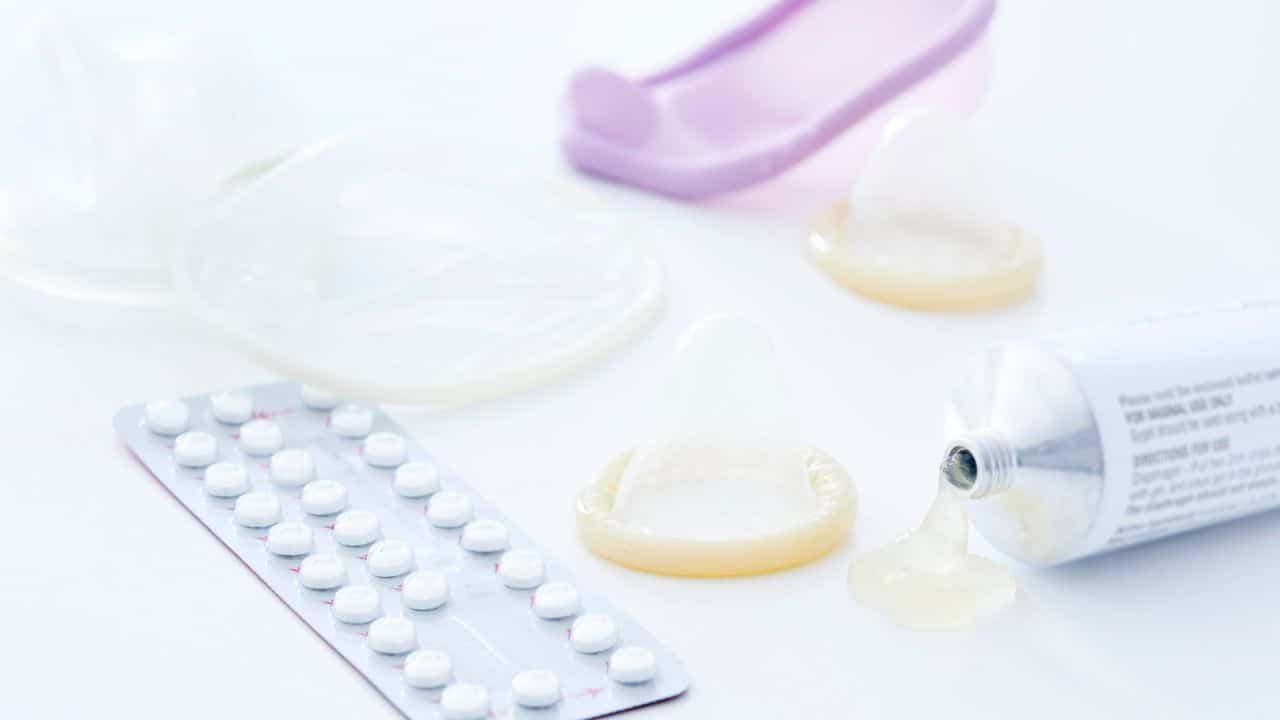The Penis Podcast Episode 13 | Follow on Spotify | Follow on Apple iTunes
DR JAYSON: Hi, I am Dr Oates, and with me is Dr Gav, together we are the dick doctors. And today we’re going to be talking about new evidence that may be hyaluronic acid fillers last a lot longer than what we generally think. Welcome, Dr Gav.
DR GAV: Thank you, Dr Jayson. Great to be here again, as always. And today is a really interesting topic because apparently, according to this article that we’ve had a look at together, hyaluronic acid dermal filler that we commonly used in our penis injections lasts a lot longer than what we may think.
DR JAYSON: Yeah, very interesting. It came up in a conference that I was at recently, and a lot of good research actually comes out of Victoria. There is a radiologist there, Moben Masta, who also does cosmetic injections. This has just been released in the January edition of Plastic and Reconstructive Surgery, which is the biggest plastic surgery journal in the world, and they were investigating patients who had long lasting swelling following hyaluronic acid. They had 14 patients and some of these patients, in fact, hadn’t had filler injections for over six years and one of them, 12 years! As they showed on the MRI scans, they could identify the hyaluronic acid. Hyaluronic acid is mostly water, and often where we’re injecting it in the face is into fat and they show up very differently. It’s what’s called a T2 weighted image. And I can remember when MRI’s first came out and that a T two image is the water, which is actually hyaluronic acid in the eye. And you’re probably too young to remember all of this, but this is how we try to remember what a T2 image was back in the day.
DR GAV: Yes.
DR JAYSON: Fat was black. And so the useful thing here is Hyaluronic acid shows up very white in the black fat, and that’s how they were able to identify it.
DR GAV: Yeah. It’s really interesting because when people are investigating, if there is any retained hyaluronic acid, often the modality they might refer their patients for is an ultrasound. But I believe after a long time, once the hyaluronic acid is integrated very well within extracellular matrix, it’s not easily seen on ultrasound, and that T2 weighted imaging is the best modality to separate it to see the hyaluronic acid as a separate component to the fat.
DR JAYSON: This was somewhat of a surprise that 12 years later, they could clearly identify the hyaluronic acid and then they went on to treat it with Hyalase and it dissolved the lumps away, which then also confirms that it’s hyaluronic acid. And generally, we would be telling patients that their hyaluronic acid fillers are going to last 18 months to two years in some of these newer and harder hyaluronic acids. But occasionally we’ll see a patient who it seems to disappear in a few weeks or months. And that was the second finding of this study, the hyaluronic acid had migrated further than where it was originally injected. And in this case, the one that gave it away the most was the lips where the patient had the lips, the border injected with the MRI, it had spread right up into the white part of the lip. And it looked a bit like a moustache, a bit like what you’ve got there, except white being under the skin. And that was, again, somewhat unexpected that it had migrated so far, because we tend to believe that after that first three or four weeks, that it’s integrated into the tissue and pretty much stays where it is.
DR GAV: Definitely. So, I guess that has implications for all of the injection techniques and the locations of the body where some areas might be most susceptible to migration, especially around the mouth. As you just mentioned, we have the Orbicularis Oris that’s constantly moving and compressing that may have something to do with the migration of that filler. So it is actually something that a lot of injectors are looking for, that off a shelf above the lip, that may be a bit of a giveaway that there’s been some migration and that it ends up with that and not a very nice cosmetic appearance for the lips after someone’s received multiple injection sessions in developing that upper white moustache, as you call it.
DR JAYSON: Yeah, and of course, this then comes directly back to our patients, because when I first started developing this back in 2014, part of the concern was, if it all disappears in 12 months, it’s maybe not really worth it. Then we got 12 months and thought, it looks pretty much the same now as it did a year ago, it’s lasting longer. The Koreans have published some studies showing good longevity, 90 percent still at 18 months. And so that was encouraging for us then. It’s common to see guys come back two, three years and still had the majority of the circumference that they previously had. They may have 90 percent of their circumference, but sometimes it’s mainly in what we call like the distal half of the penis (the end of the penis) and then the base of the penis is becoming somewhat thinner. And we discussed this in the past and noticed and say “hey, your guy comes back two, three years later and all you have to do is fill a little bit around the base and it’s all looking good again.” I think this study is actually putting some more evidence to what’s going on there.
DR GAV: Exactly, and as you said, I have seen the same thing and I have seen guys retaining filler for over two years coming back with still obviously quite a lot of filler around the shaft of the penis, but it may have migrated a little bit distally. I’ve seen at the opposite direction as well, down towards the body where it’s migrated a little bit down towards the body. And all they have to do is fill up a little bit towards the distal shaft. But it’s obviously the filler is hanging around and it’s lasting a lot longer than we initially expected, which clients are quite happy about.
DR JAYSON: Yeah, and that very slight migration fits in with what they’re finding on the MRI. Maybe we should be sending your guys in for a series of MRI’s on their penis. I’m not sure how we’re going to get clients them to agree to any of the studies that we’re doing. But yes, this idea that guys think and everybody knows it’s gone in 12 months and it’s a waste time, but now experience, it’s commonly dated two or three years. It’s now solid evidence coming out that that is a real thing, it’s not just in our imagination.
DR GAV: Exactly. And one other interesting thing you mentioned about that article was that even after that huge amount of time, that one that was up to 12 years later, you were still able to use Hyaluronidase and actually dissolve the hyaluronic acid and then confirm on MRI that that had been removed. So I think that’s another thing that guys feel comforted by, by our procedure, is that it’s still reversible after that much time.
DR JAYSON: So all really useful information, I guess what we should be doing is publishing some longevity studies as well. I’m going to be feverishly working today in our last day of lockdown here in WA and putting together some of the current evidence for our study that we’ve been doing for over two years. So we can hopefully actually get something further published on this. But it’s encouraging news, good for guys to know that there is real evidence that hyaluronic acid lasts a lot longer than generally believed.
DR GAV: Excellent. Well, I think that about wraps it up for today’s topic. And again, as always, if you’ve got any further questions about the studies or even in general feel free to contact us, make comments, and we’ll do our best to get back to you. But make the use of the last day lockdown, Dr Jayson, and continue on your research. That’s fantastic. And I can’t wait to speak to you again soon about another interesting topic.
DR JAYSON: Great, good talking to you, Gavin. Yes, I’m looking forward to our next topic.
DR GAV: All righty. Don’t forget, guys, confidence changes everything. And we’ll see you next on.
For new episodes follow the Penis Podcast on Spotify or Apple iTunes
Or visit the CALIBRE Youtube Channel for new episodes of The Penis Show






